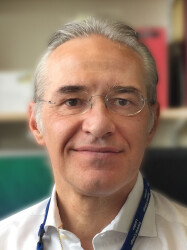BibTex format
@article{Cornice:2024:10.3390/genes15020197,
author = {Cornice, J and Verzella, D and Arboretto, P and Vecchiotti, D and Capece, D and Zazzeroni, F and Franzoso, G},
doi = {10.3390/genes15020197},
journal = {Genes},
title = {NF-κB: governing macrophages in cancer},
url = {http://dx.doi.org/10.3390/genes15020197},
volume = {15},
year = {2024}
}

